We’ve all had our hiking plans upended this year. I intended to knock off another 500 miles or so of the PCT, going from Shasta City (where I left off in 2018) to somewhere in northern Oregon. But that’s not going to happen. Small towns along the trail are not anxious to welcome hordes of grubby thru-hikers. Nor am I comfortable with the idea of staying at hostels or small-town motels.
So the ideal hike in the time of COVID is a self-supported route, preferably not too far from home. The High Lonesome Loop in the Indian Peaks Wilderness fits that bill. It is a route I’ve been meaning to hike for a while but kept putting off for larger projects.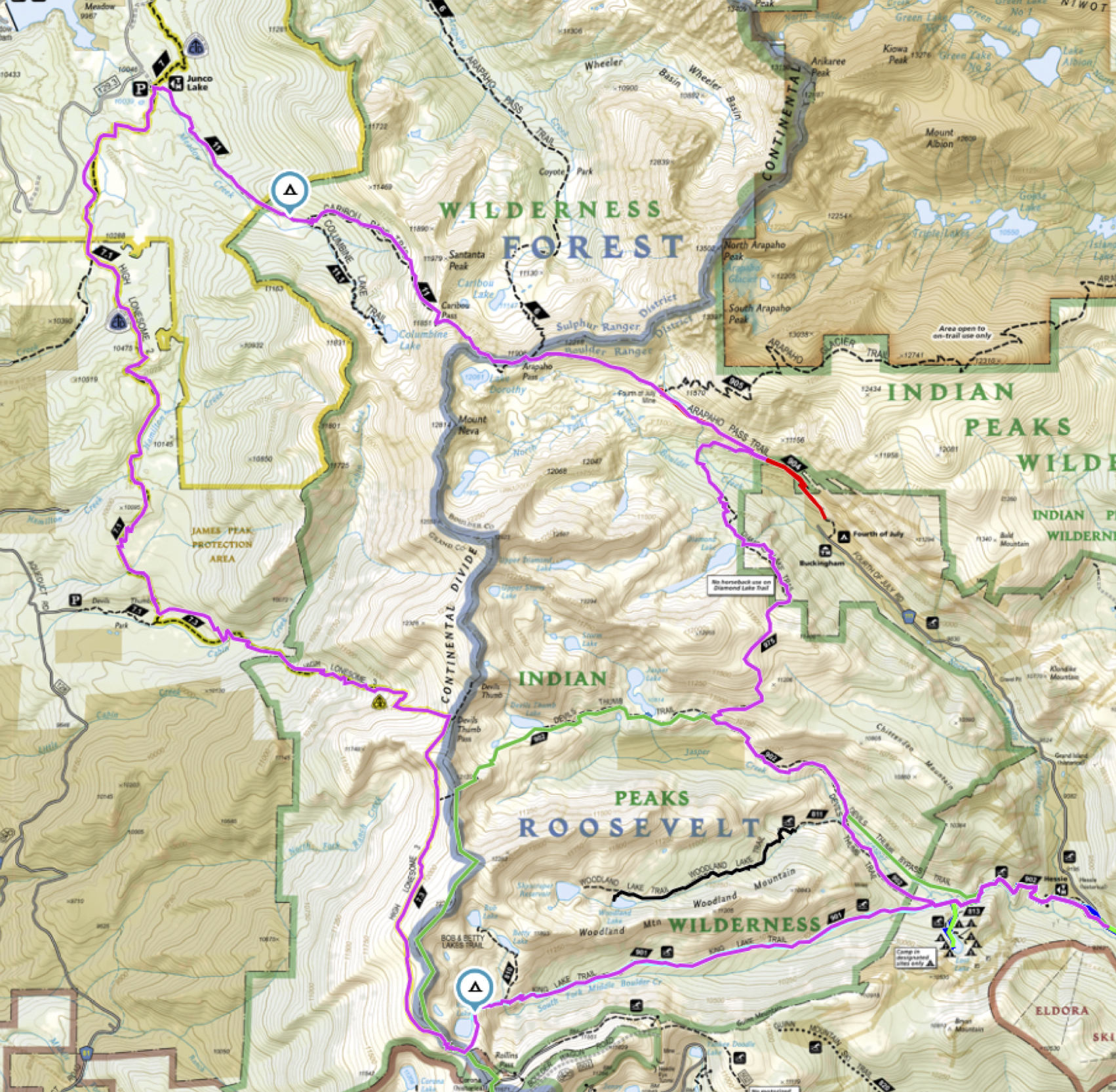
It is a roughly 35-mile loop through the heart of the Indian Peaks: up the S Fork of Boulder Creek to the Divide; along the Divide, then down to the High Lonesome Trail on the west side, up over Caribou and Arapaho Passes to the N Fork of Boulder Creek, then across a ridge and over to the M Fork and back down to the trailhead at Hessie.
Getting to Hessie was perhaps the most challenging part of the hike. Dan, my longtime friend, former colleague, and current hiking partner still has a job. A Saturday start worked best for him. Since we were only planning to hike 6 miles to King Lake the first day, we figured we could start at noon and avoid traffic jams at the very popular Hessie trailhead.
Ha.
Five miles from the trailhead a ranger was stopping cars at Nederland High School, where a shuttle was set up. Since we were planning a three-day trip, I asked if cars could stay overnight in the parking lot. The ranger said yes, so we parked and got on the shuttle. Halfway up I finally had the sense to ask the driver if the shuttle ran on Monday when we would be returning. “No” was the answer. That meant a five-mile road walk tacked on to the end of the hike. No thank you to that.
We took the shuttle back down, talked to the ranger again. He was agreeable to us driving to Hessie. We just had to wait until a space was available. Another ranger was monitoring the parking situation, and when she radioed down that a spot was available, he would let us drive up. The wait was not long, but overall it took us about 90 minutes to traverse the few miles from the high school to the trailhead.
That annoyance was quickly forgotten once we got on the trail and started walking (after stashing a couple of beers in the creek for our return, of course).
The route up the S Fork of Boulder Creek proceeds on a good trail through a pleasant forest dominated by Englemann Spruce. After a couple hours of steady hiking, we were in the high country once again.
We found an ourstanding campsite on a ledge below King Lake. As there was plenty of light left in this midsummer day, we made the short climb up to the lake for a bit of evening fishing. 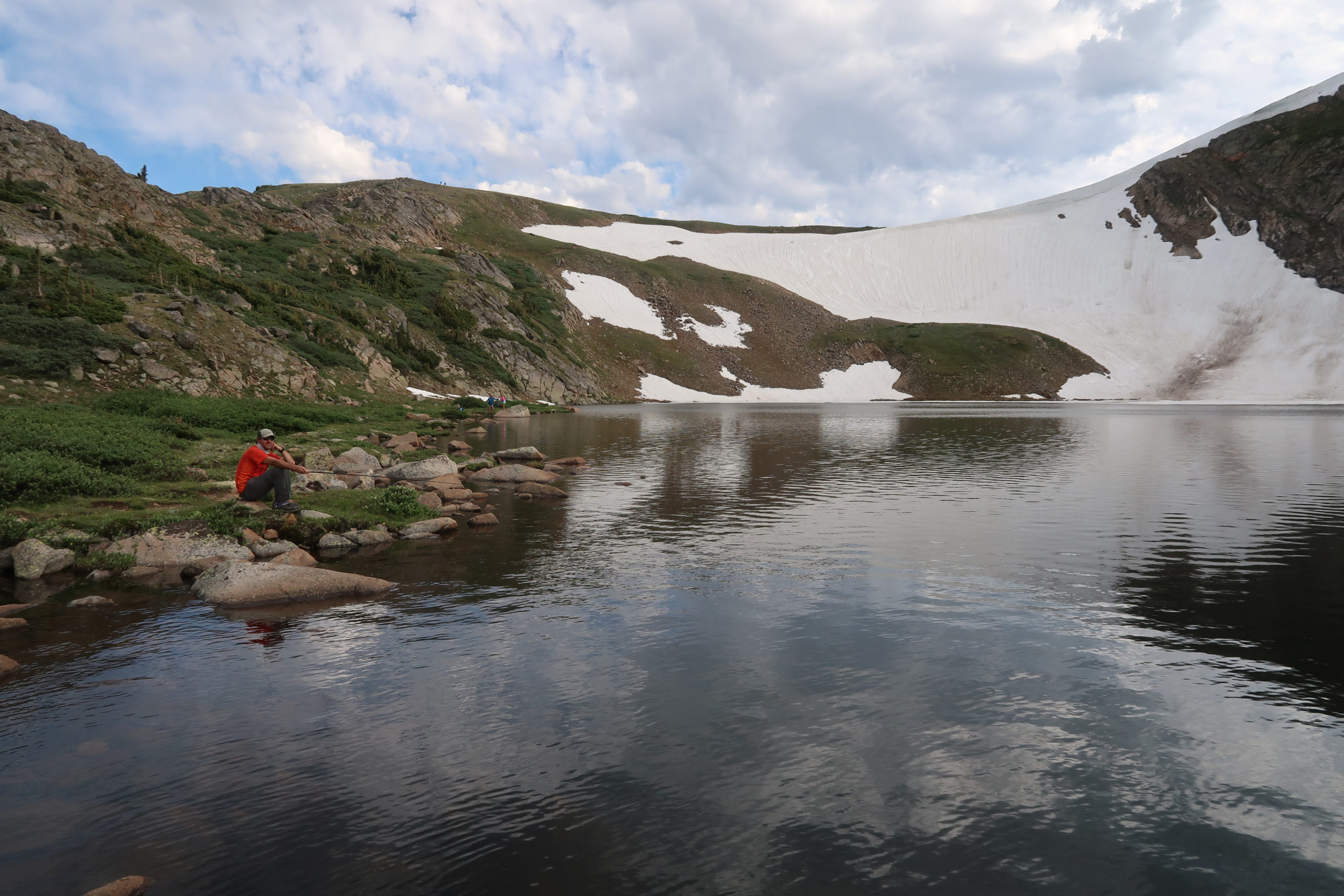
But the fishing was dead. We did see one fish rise, but that was it. Our consolation was to enjoy this beautiful lake and then go back to camp to watch the last rays of sun slant down the mountains to the plains beyond.


Our high perch gave us an even better view of the sunrise next morning.

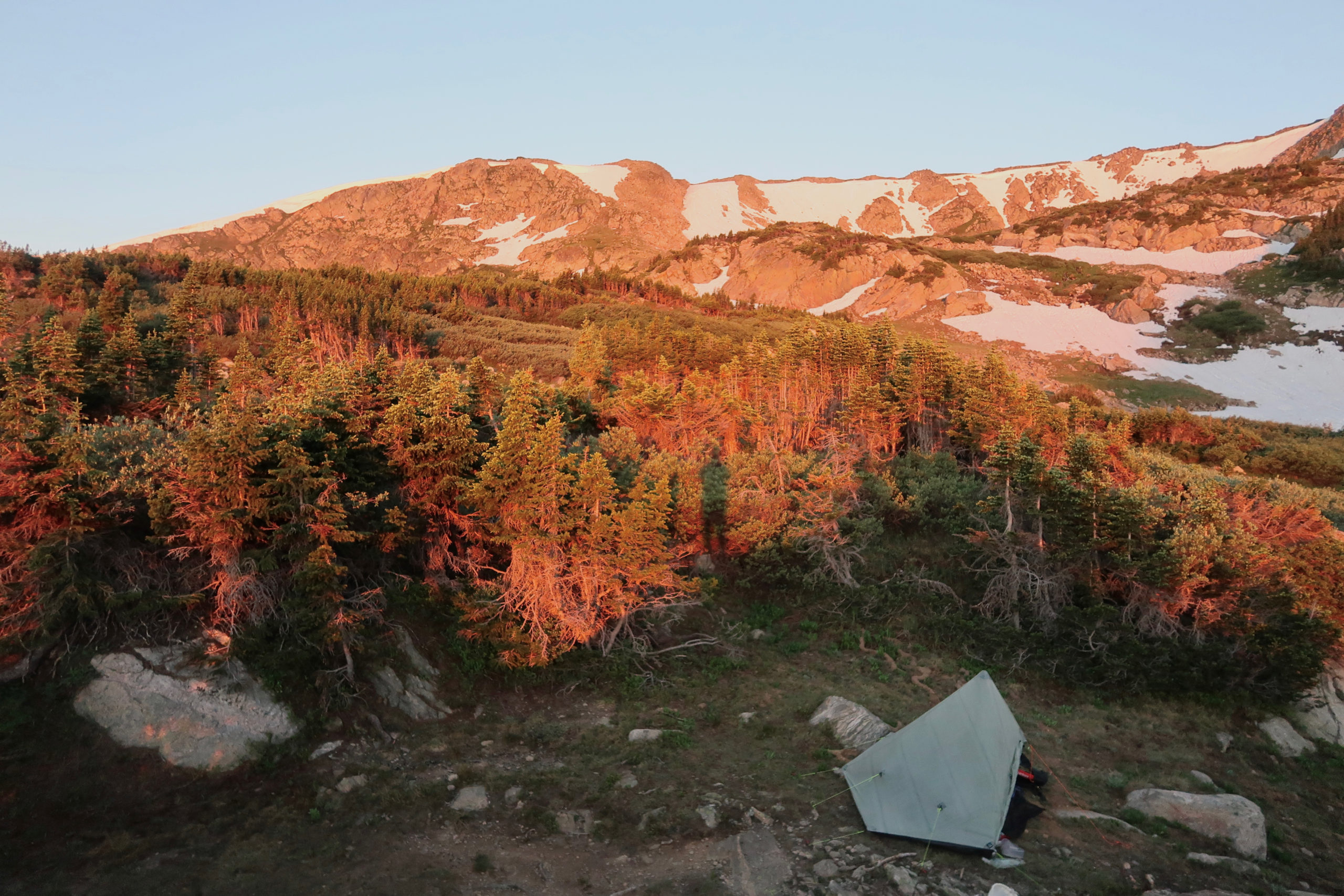
We made the short climb up to the Divide at Rollins Pass, and commenced a tundra walk of about 5 miles north to Devils Thumb Pass.
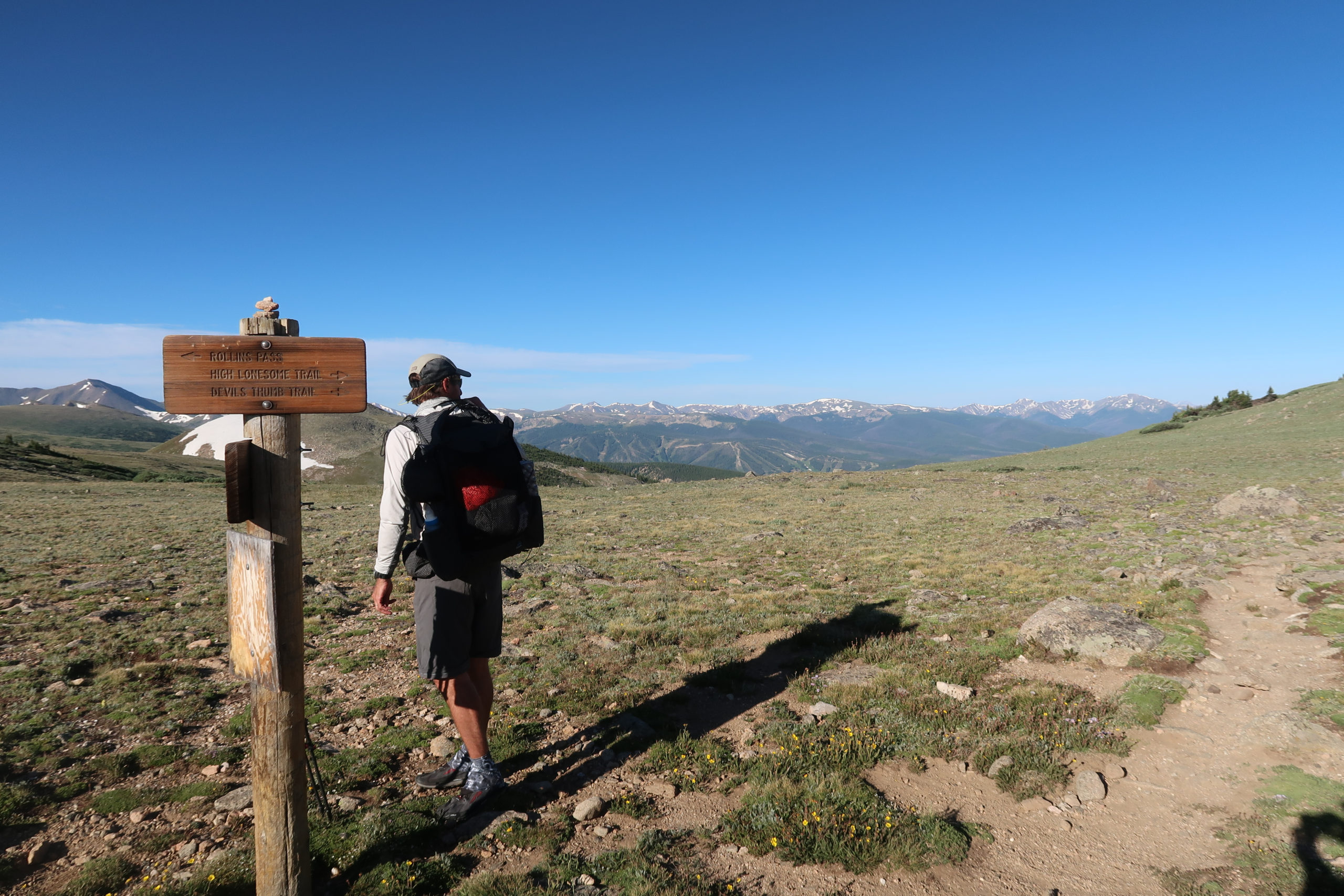


The weather was fine and the wildflowers were at their short-lived peak. We enjoyed views all the way to the Gore Range in the west and the Never Summers to the north. We encountered dozens of trail runners, nearly all of them masked, even at 12,000 feet.
The runners were apparently doing the Devil’s Thumb loop – they disappeared once we turned west from the pass and swiftly dropped down 2,000 feet to the High Lonesome Trail. Clouds rolled in and we encountered a few sprinkles as we made our way through a lodge pole forest broken up by marshy meadows. We turned west up Meadow Creek, and found an excellent campsite at the foot of Mt Neva.
The meadowy campsite came equipped with a moose family. We saw them 60 yards off at dusk. At dawn they were practically in our camp, apparently having determined that we were harmless.


We regained our alpine views on the climb up to Caribou Pass, where we could look down on Caribou Lake, and across its basin to Arapaho Peak and Arapaho Pass.
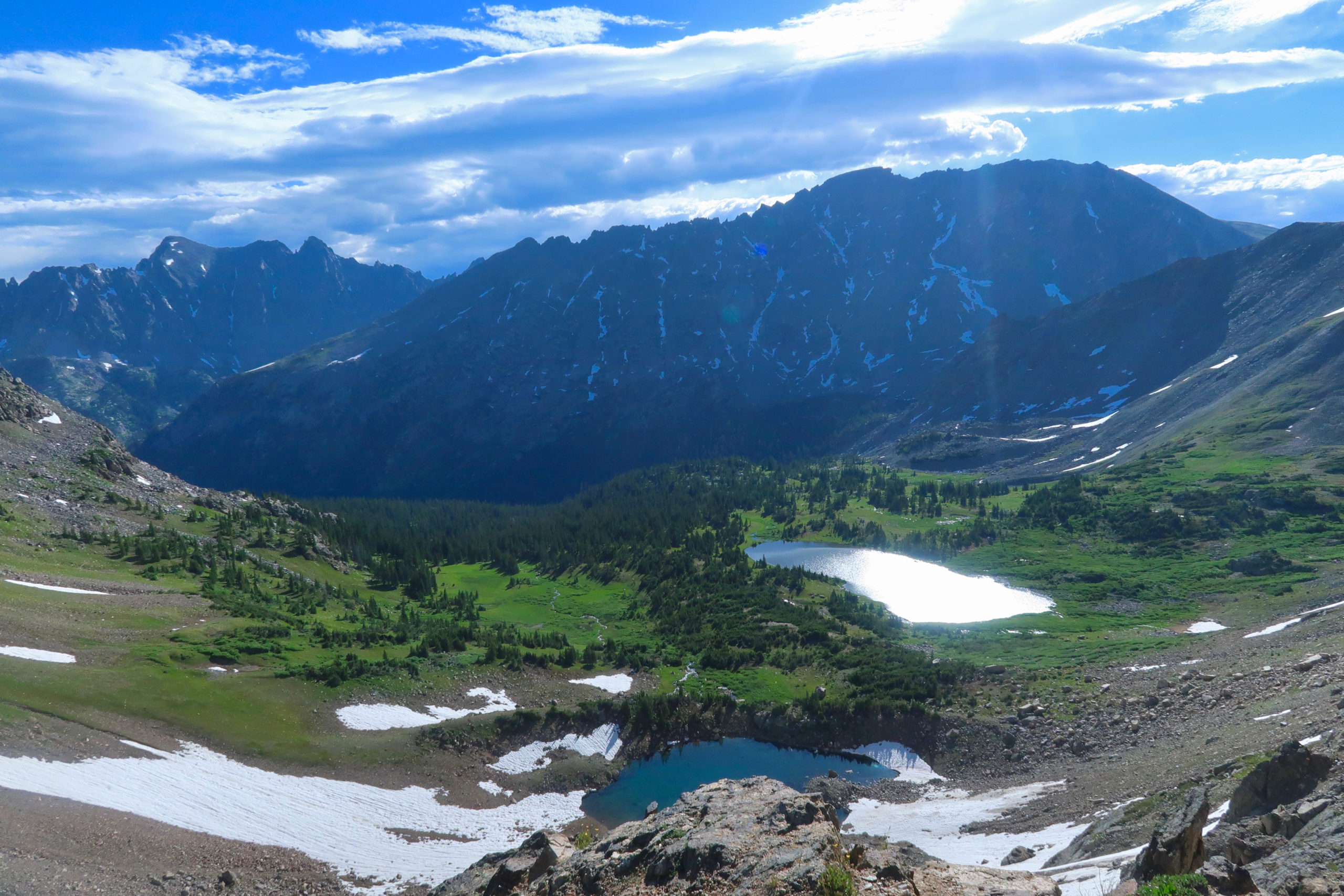
What we couldn’t see, until we got there, was a series of snow-filled couloirs blocking the trail. The first one was the gnarliest, a 45° slope down 200 feet to a drop off of unknown (but significant) height. It was only 50 feet across but totally exposed. Fortunately we had packed micro spikes at my wife’s suggestion. Otherwise I think we would not have chanced it but would have hiked down to Caribou Lake and then back up Arapaho Pass.

A couple other couloirs were similarly snow-filled, but smaller. We were able to bypass them by downclimbing on the loose rocky slopes.
The trail eventually wrapped around from the north to the east side of Mt Neva and we were done with snow crossings for the day, and could enjoy views of Dorothy Lake before we intersected with Arapaho Pass.
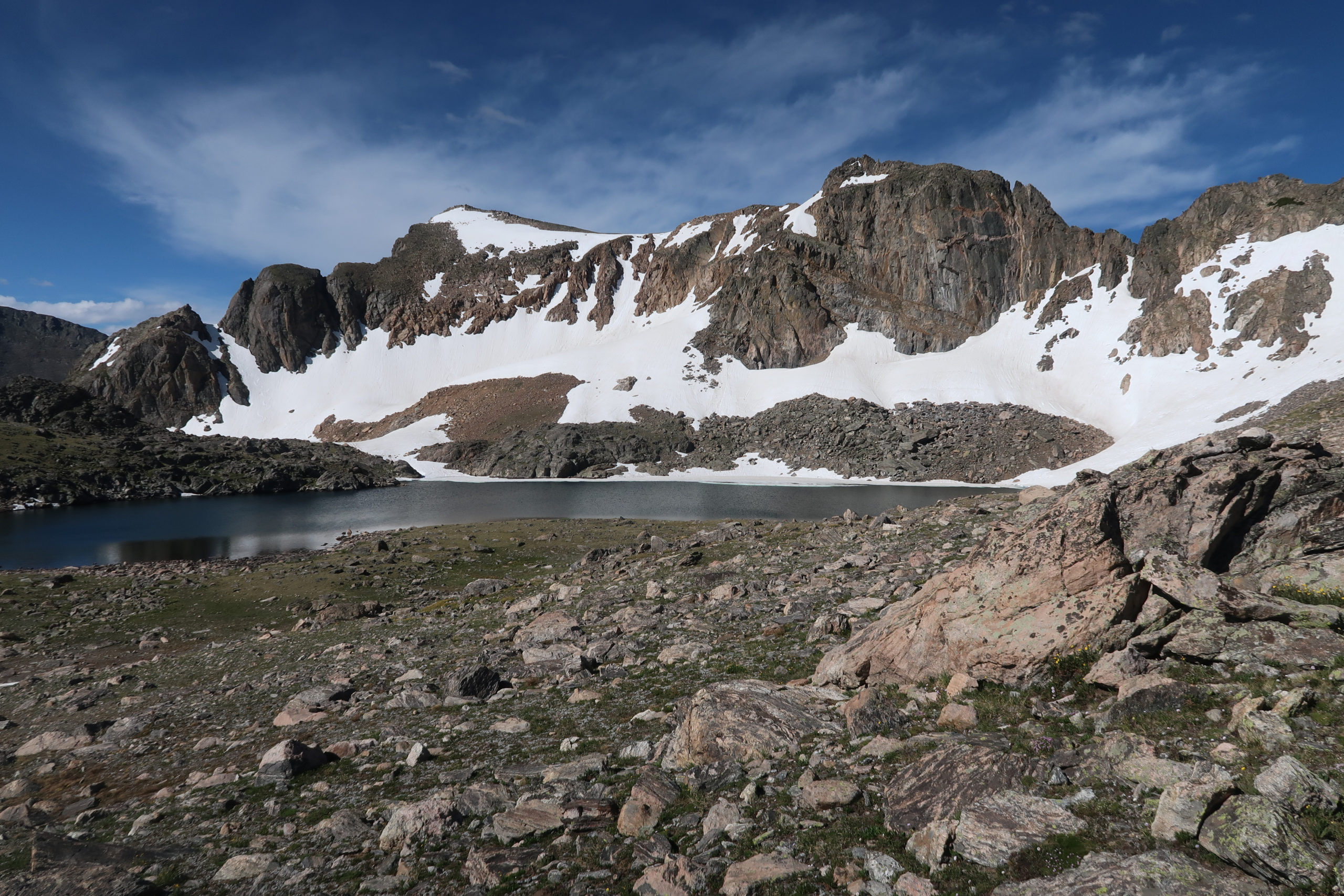
Having been disappointed with the fishing at King Lake, we planned to lunch and fish at Diamond Lake. But thunderheads began to build. By the time we got to the lake, we were greeted with light rain and whitecaps on the water.
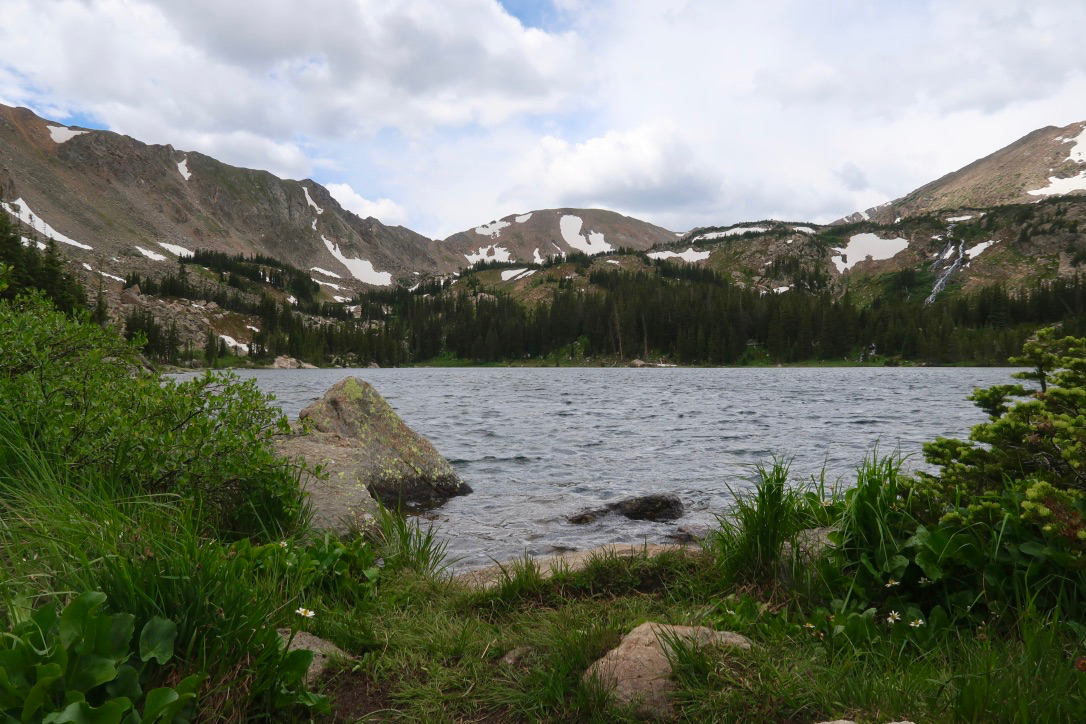
The ridge between Diamond Lake and the Middle Fork of Boulder Creek provided us with our last tundra walk. The squalls cleared and left us with fine views of James Peak to the north and the plains to the east.


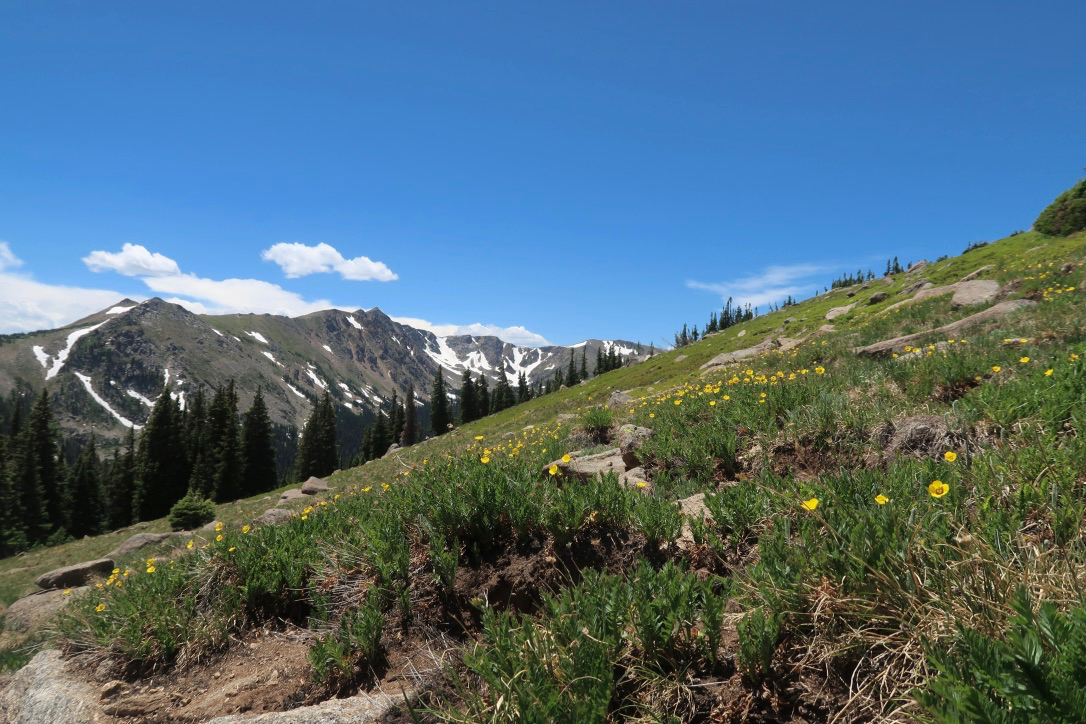
We hoofed it down to Jasper Creek, and thence to Boulder Creek. There we recovered our beers (Sierra Nevada Pale Ales), cooled our feet and dunked our heads in the melted snow of our home waters.
We live in strange (and often terrifying) times. But the mountains and wilderness are still there, still able to remind us that we a just one part of this planet. We depend on them far more than we realize, or are willing to admit. The plagues of the last decade – SARS, MERS, Ebola, Zika and now COVID – are all the result of environmental disruption. It’s time we learn our lesson and agree to let wild places remain wild.


Awesome blog and pictures Drew. Enjoy Yellowstone with Dan.